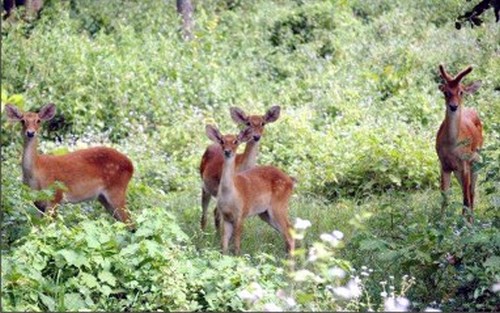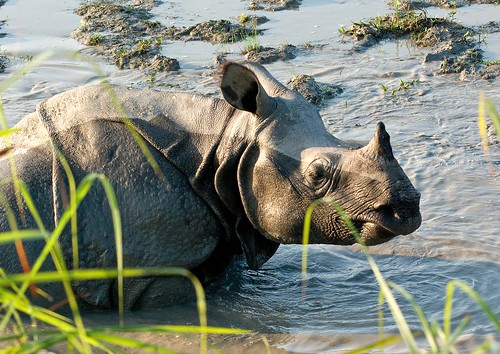Good News for Sangai Lovers
Probably one of the best news for a long, long time. This time the endangered Sangai or Brow Antlered Deer, the only one of its kind in the world, is today in the news for the right reasons. According to a senior Manipur State Forest official, out of the seven matured female Sangais kept at the breeding centre at Langol, four of them are in their mid-pregnancy period. This piece of information is sure to bring smiles not only on the faces of wild life enthusiasts but also the general public, for according to the last official Census of Sangai taken in 2003, only 180 of them were recorded as surviving in their natural habitat at the 40 square kilometre Keibul Lamjao, which is the only floating National Park in the world.
|
The endangered species is facing serious threats in their natural habitat due to a number of factors, including poaching, military operations launched at the floating park to flush out underground cadres as well as infringement on their natural habitat by humans. With the stated objective to conserve and increase the population of Sangai, which had dropped to all time low some years back, a breeding centre for the Sangai was set up at Langol reserve forest area.
At least eleven Sangais including four males are presently kept at the breeding centre, which is also known as the Second Home of the Sangai and located near the Manipur Zoological garden. The zoo employees are presently looking after the breeding centre.
A senior Manipur State Forest official said, "We have detected four female Sangais in their mid-pregnancy stage and they are being cared by the zoo staff including veterinary attendants". The official further said that this is the first time that four female Sangais have become pregnant at a time in the breeding centre and they are likely to give birth probably in November or December.
He added that food supplements and nutrients are currently being fed to the pregnant Sangais and all of them are in good health. The mating period of the Sangais is between February and May and extra caution was taken to ensure that the males did not attack each other and inflict injuries upon themselves during the mating season, he added. Sangai is the State Animal of Manipur is one of the three sub-species of the deer found in Asia. The Forest official said that plans are afoot to release the Sangais at its natural habitat, Keibul Lamjao, if its population increases in the breeding centre.
Much apprehension was voiced over the fate of the Sangais, when security forces launched its "Operation Summer Storm" at Loktak lake, where the Keibul Lamjao Park is located to flush out militants. However much to the relief of the people and wild life enthusiasts, there is no official record of any Sangai being killed in the offensive launched by the security forces.
Courtesy: The Sangai Express



